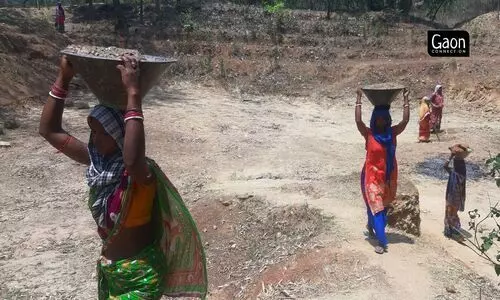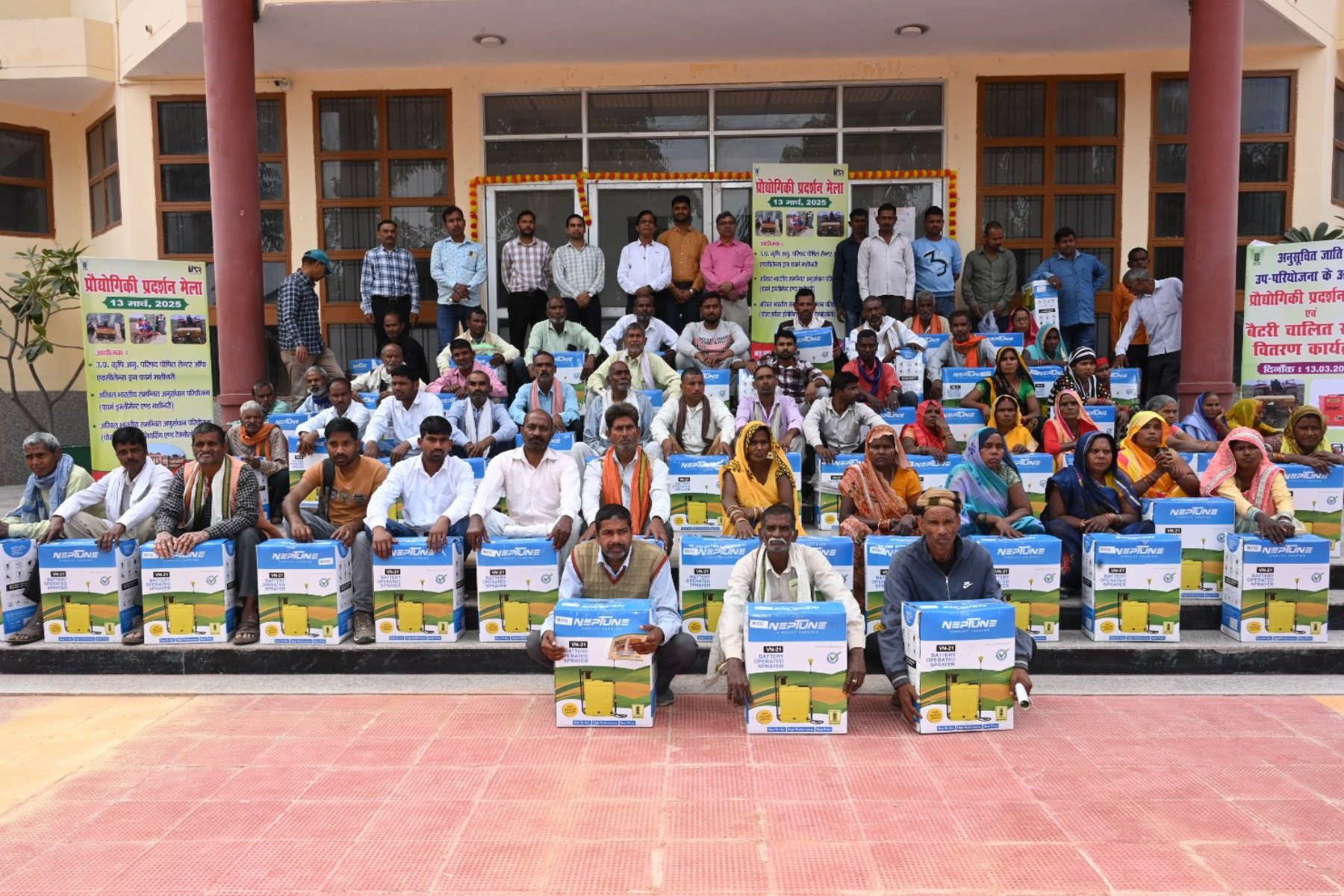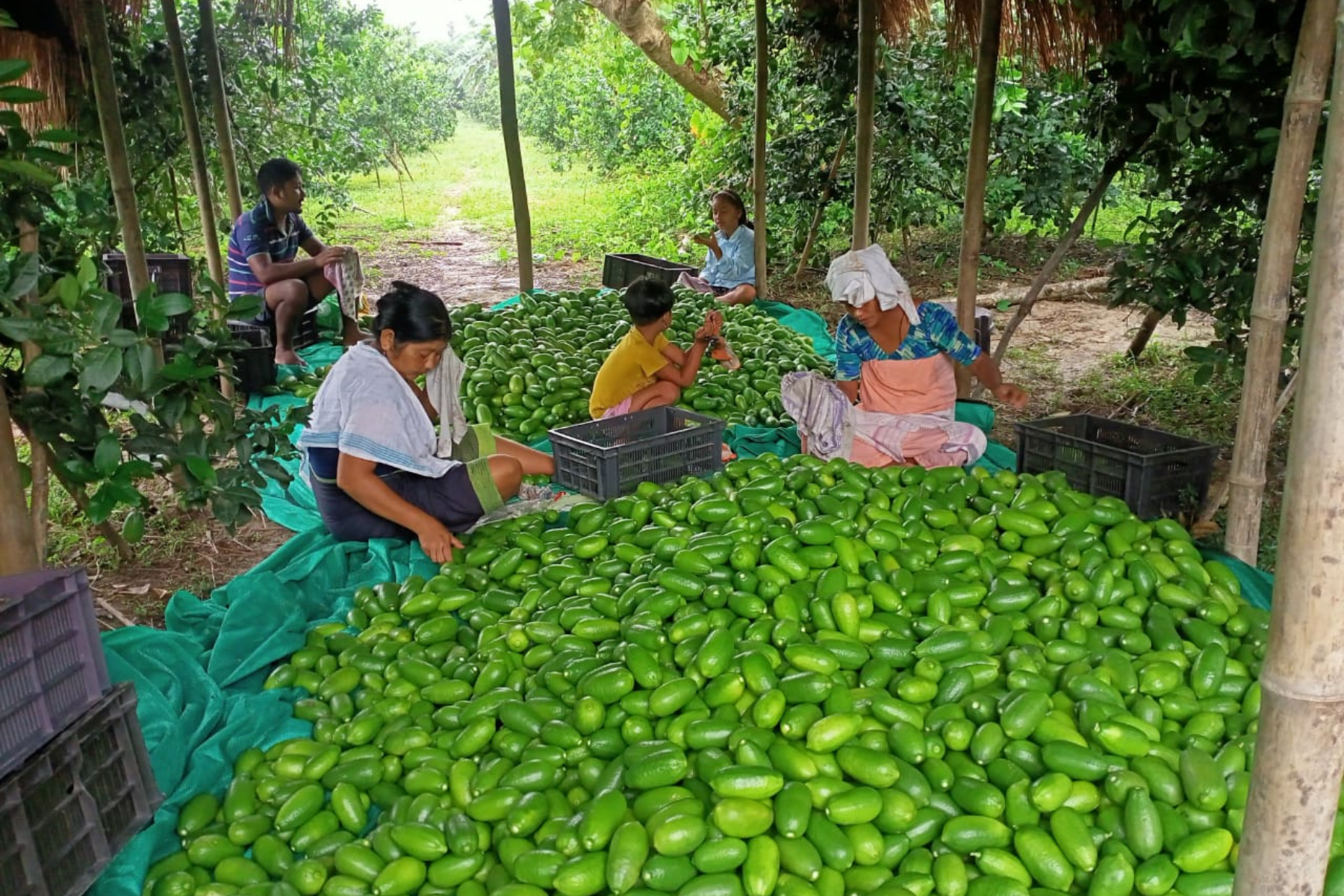Barabanki (East Singhbhum), Jharkhand
For a large part of the year, 51-year-old Laxmi Narayan Singh’s three acre plot of land used to remain fallow. He and his 46-year-old wife Savita Singh from Barabanki village in East Singhbhum district barely managed to grow one crop of paddy a year.
However, for the past one year, their lives are transformed. The couple is not only cultivating a variety of crops all through the year but also earning wages out of working on their own fields. All due to the Jharkhand government’s Birsa Harit Gram Yojana, which was launched in 2020 as a rural employment scheme, in convergence with the central government’s Mahatma Gandhi National Rural Employment Guarantee Act (MGNREGA). Under the state scheme, fallow land is being afforested and farmers are provided fruit bearing trees to earn additionally from their farmlands.
“I recently experienced liver problems and income through inter-cropping on my land ensured proper treatment. The additional income from the land is helping organise marriage and other family affairs properly. We are hopeful that life will continue to improve with the help of these income generating projects”, the 51-year-old farmer told Gaon Connection.
Shekhar Chandra Verma, gram rozgar sevak of Barabanki panchayat told Gaon Connection that Laxmi Narayan Singh’s plot was developed in June 2020 under the Birsa Harit Gram Yojana and mishrit kheti (inter cropping) was started there. “Before this the plot was unused due to poor soil quality and the owner had not farmed it for a long time. He was motivated and educated to adopt inter copping,” said Verma.
Like Laxmi Narayan and Savita of Barabanki village, a large number of villagers across the state are benefitting from the scheme, which is resulting in improved lifestyle. Farmers are growing multiple crops, creating fish ponds to grow fishes and sell them, and their families are consuming nutritious food grown on their farmlands that is also addressing the problem of malnutrition in rural areas.
Watch Also
The rural development department funds improvements of the plots and development of ponds, whereas farmers are paid wages to work on their own fields.
According to a report of the Ministry of Rural Development, in 2022-23 altogether 4.43 million active workers are registered in Jharkhand under the MGNREGA while the government has allotted a budget of Rs 90 million for 4,350 panchyats in 24 districts of the state. On an average, each worker gets Rs 225 per day, and altogether 137,612 works have been completed so far in the current financial year in the tribal populated districts.
Non-government organisation Transform Rural India Foundation (TRIF) is helping the state government in proper implementation of the MGNREGA projects.
Nihar Ranjan, state programme officer of TRIF said that their role is planning, advocacy, evaluation, monitoring, guidelines and supporting respective departments in proper implementation of the MGNREGA projects. They impart training, design modules and improve capacity along with getting solutions to challenges while running each project, he added. In Jharkhand, 262 types of works are being implemented under 10 different categories of MGNREGA like rural connectivity, water conservation, traditional water bodies renovation, flood control, drought proofing, canals, irrigation facilities, land development, rural drinking water, fisheries, rural sanitation.
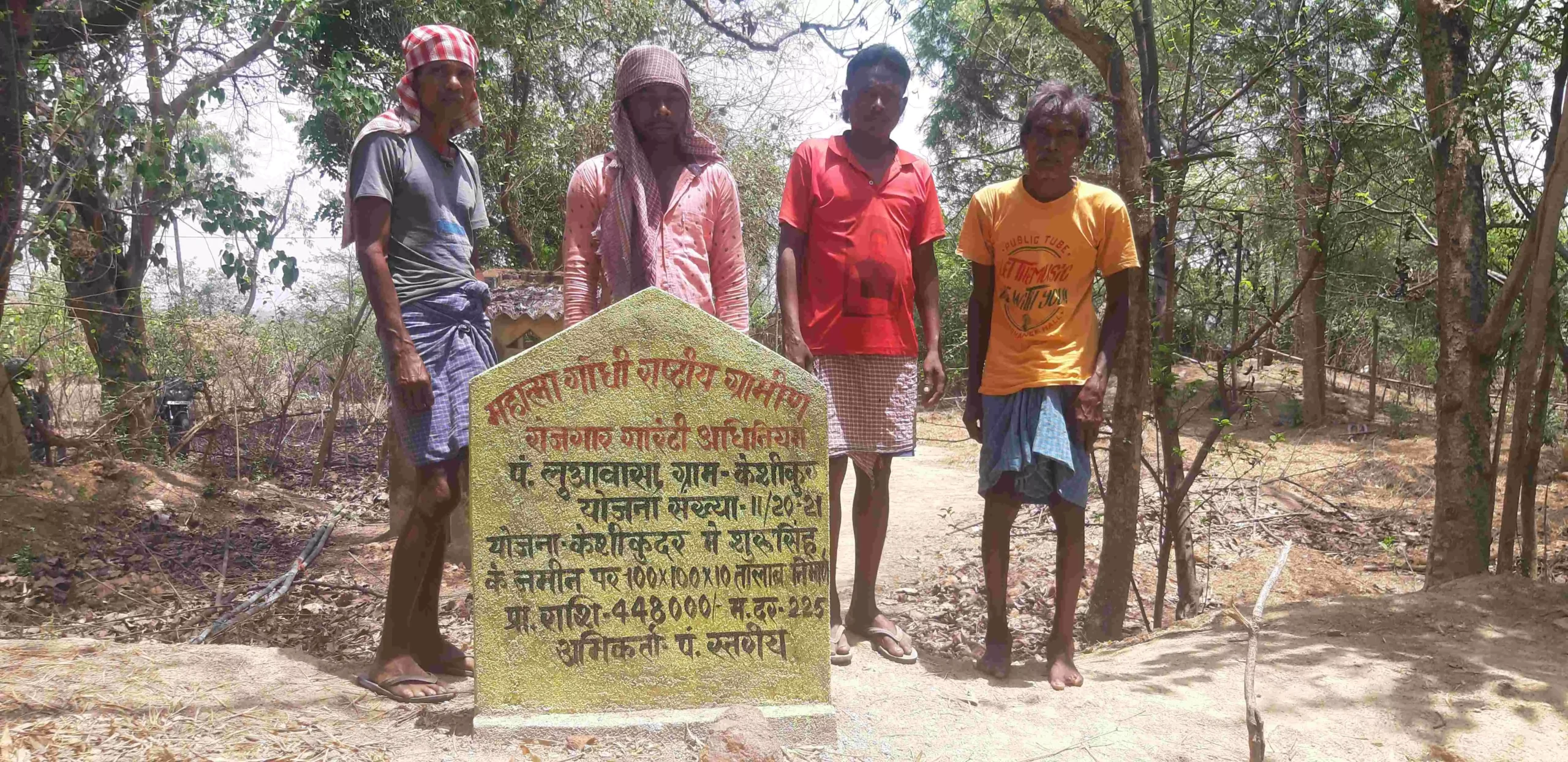
In 2022-23 altogether 4.43 million active workers are registered in Jharkhand under the MGNREGA.
The best of both worlds
Explaining how the scheme benefits farmers, Verma said: “The rural development department gave fruit trees free of cost to Laxmi Narayan Singh and also gave wages to the farmer to plant them on his field. Further, he was also paid under MGNREGA for taking care of these trees planted at a distance of 15 feet each. This included irrigation, making boundary walls, etc,” the gram rozgar sevak added.
Over 50 saplings of fruit trees including mango, guava, papaya, etc were planted by Laxmi Nayaran and his wife on their land, and they were told to cultivate vegetables including little finger, brinjal, cucumber, etc in between the fruit trees.
“This inter cropping has helped the farmer earn a profit of around Rs 25,000 in a year. Further, his wife Savita did intercropping on another one acre plot and got a profit of around 50,000 after selling vegetables in a year,” said Verma. “The couple will earn more from the next year when the fruit trees start to bear fruits,” he added.
Savita Singh told Gaon Connection that since June 2020 they have been farming two times in a year and are ready to do so three times, if proper irrigation facilities are made available in the summer season. “The government should give special attention to irrigation in order to start cropping three times a year. Farmers will earn more if their fields get adequate water during the summer season,” Savita said.
She thanked the scheme for bettering her family’s lifestyle. “I have two sons, one is studying in class seven and another in class ten. We had been facing financial difficulty in getting them good education. But with the help of earnings from the mishrit kheti projects, both the children will hopefully enjoy a better academic future,” the mother of two said.
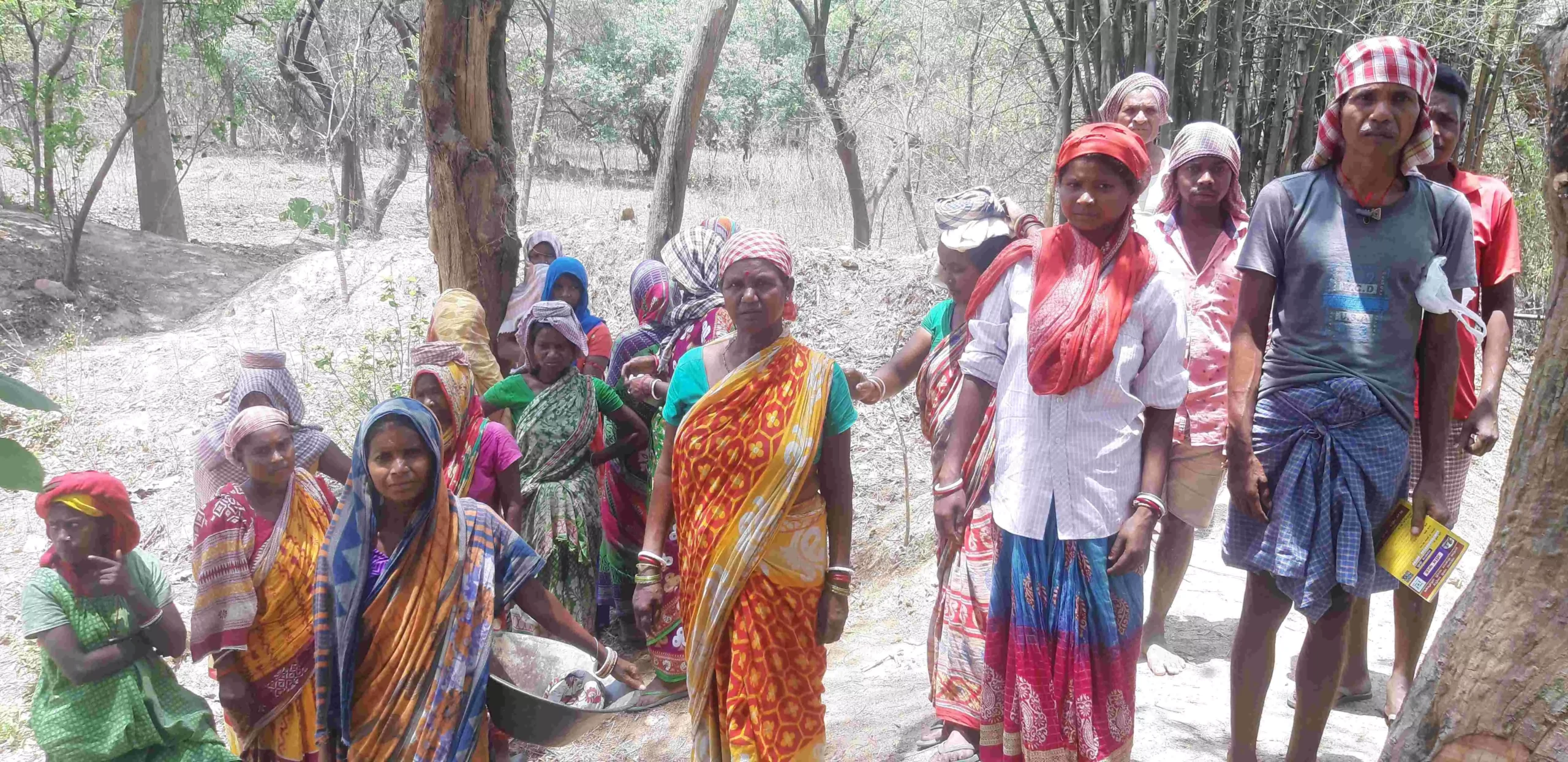
As male and female workers both get the same wages, the number of women workers is higher in the district as compared to male workers.
Special focus on rural women
Rima Mahato, Barnali Mahato, Madhuri Mahato and Sandhya Mahato from Kamlabera village in East Singhbhum are among several rural women in the state who have been practising vegetable farming on small plots near their houses. The state government’s rural development department runs ‘Didi Bari’ and ‘Didi Bagiya Yojana’ for rural women. Women get adequate nutritious vegetables from these plots without spending money, rather they receive wages for working as labourers on their own plots.
The department provides Rs 24,500 to each beneficiary of 24 Didi Bari under the Barabanki panchayat including Rs 17,000 as labour wages.
Rima Mahato of Kamlabera village told Gaon Connection that they are no longer worried about what to cook daily to feed the family members as they get adequate vegetables from their own plots, which had been barren for the past several years.
“We now work in our own fields and are no more financially dependent on our husbands as we sell vegetables. And feed nutritious food to our children too,” Madhuri Mahato, another villager, said.
Vikas Mahato, former block programme manager in Jamshedpur said that Didi Bari and other MGNREGA projects are ensuring better earning opportunities to rural women.
“Male members in families have started respecting their women as the latter are earning money. Rural women and growing children are getting nutritious food with help of projects like Didi Bari. Several projects have been implemented successfully with the help of women workers,” Mahato said. He went on to inform that women take more interest in working as daily wage workers because they get equal wages to men under the MGNREGA.
Additional project manager at East Singhbhum district, Arvind Kumar, said that unskilled workers get Rs 225 per day, while semiskilled and skilled workers get Rs 326.16 and Rs 429.94 per day, respectively. Male and female workers both get the same wages, hence, the number of women workers is higher in the district as compared to male workers, he added.
However, daily wage workers have appealed to the rural development department for increasing daily wages and timely payment.
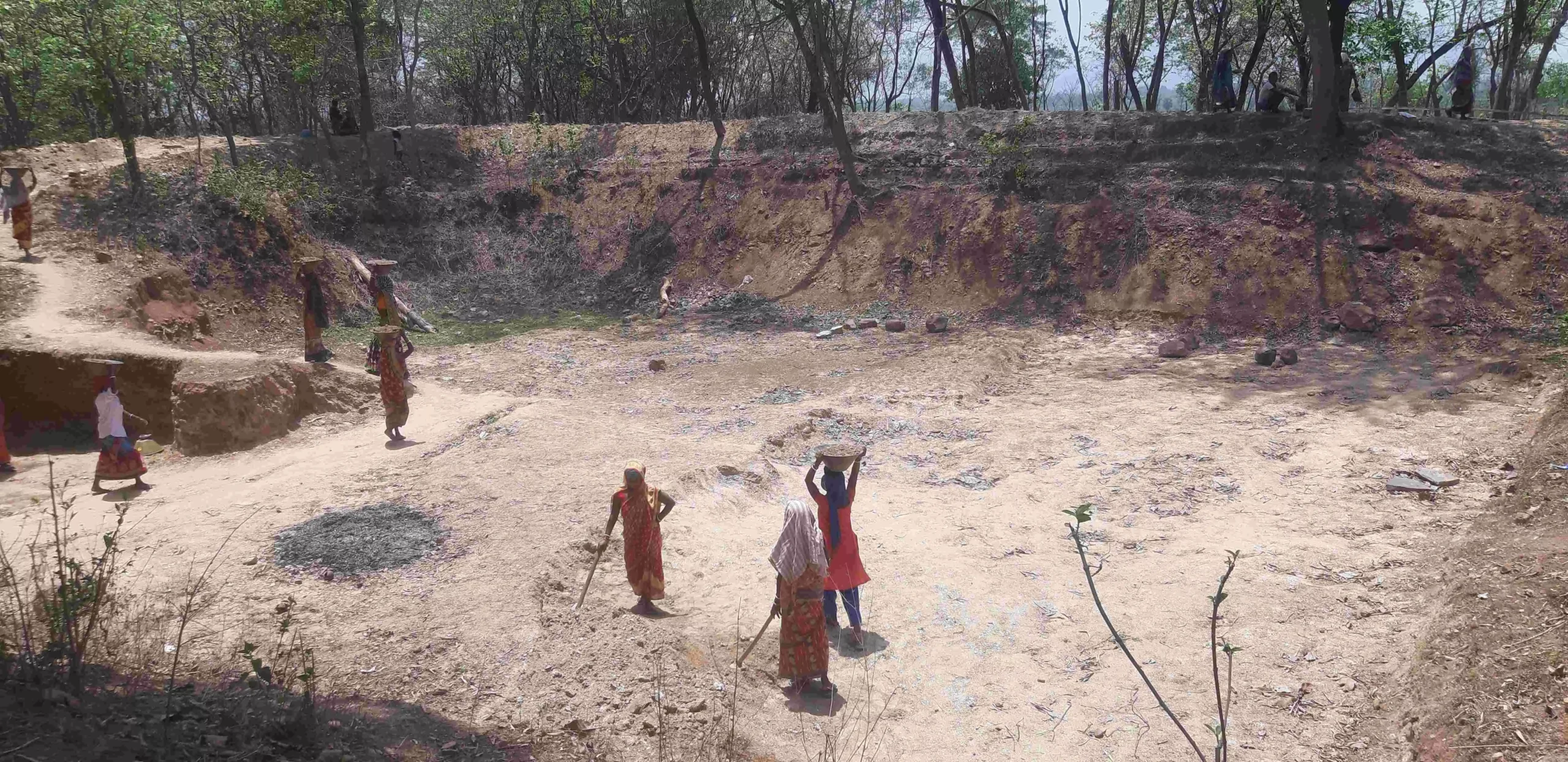
In Jharkhand, 262 types of works are being implemented under 10 different categories of MGNREGA like traditional water bodies renovation.
Also Read: ‘Mahila Mates’ and Asmita app raise women’s participation under MGNREGA in Sonbhadra
Multiple benefits
Suru Singh, resident of Keshikudar village has benefited with pond construction on his plot. His family members and other villagers got wage opportunities by working on the field while he earned money by selling soil of the plot. “The pond will ensure water conservation and proper irrigation in the near future. I will soon start fishery activities in my pond and hopefully the financial status of my family will improve,” Suru Singh said.
In each of the 24 districts in Jharkhand, several successful stories are there under various projects such as Birsa Harit Gram Yojana, Didi Bari Yojana, Didi Bagiya Yojana, etc, said Nihar Ranjan of TRIF. “On the one hand, farmers are getting their lifestyle improved, on the other hand rural women are getting nutritious vegetables from small plots near their residences. Rural women are also developing nurseries on their own land and earning money,” Ranjan added.
Karim Malik, TRIF State Lead, Jharkhand add that the rural population has benefited immensely from the various projects under MGNREGA. TRIF’s team members design policies and projects to ensure better earning opportunity to villagers, ensuring livelihood improvement other than daily wage opportunity from working as a labourer at a particular site of each project, ‘Malik’ said.
This story has been done as part of a collaboration with Transform Rural India Foundation (TRIF).

